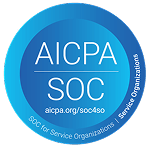FAQs
 What MBA scholarship opportunities are specifically available for Indian students?
What MBA scholarship opportunities are specifically available for Indian students?
Indian MBA applicants can explore several targeted scholarship options like the JN Tata Endowment, providing loan scholarships of INR 10,00,000 with partial conversion to grants based on performance. The Stanford Reliance Dhirubhai Fellowship offers full tuition for up to five Indian students attending Stanford Graduate School of Business who commit to returning to India after graduation. The Indian School of Business (ISB) YLP programme partners with several U.S. business schools to offer exchange scholarships for promising Indian students with limited work experience. Also, MPOWER Financing awards up to US$5,000 to promising STEM postgraduate students from India through its Udaan India Scholarship.
 How do loan repayment terms differ between Indian bank education loans and U.S.-based MBA loans?
How do loan repayment terms differ between Indian bank education loans and U.S.-based MBA loans?
Indian bank MBA loans typically require repayment to begin within six months of graduation with five- to seven-year terms, while many U.S. lenders offer more flexible 10-year repayment periods. Indian loans offer tax benefits under Section 80E allowing unlimited interest deduction for eight years, while U.S. loans potentially provide tax advantages for Indian students while they are in the U.S. Additionally, interest rates on Indian bank loans may be lower than U.S. private loans for international students, but require substantial collateral like property documents for amounts exceeding INR 7,50,000.
 What strategies help Indian students minimize MBA debt while studying in the U.S.?
What strategies help Indian students minimize MBA debt while studying in the U.S.?
Focus on applying to business schools with strong financial aid packages for international students, such as Harvard, Stanford and NYU Stern, which offer need-based scholarships covering up to 50% of tuition. Consider graduate assistantships that provide tuition waivers and stipends, particularly at public universities where these positions are more available to international students. Many successful Indian MBA students also combine multiple funding sources, including partial scholarships, employer sponsorship (especially from consulting and tech firms) and family contributions to reduce overall loan amounts.
 How can Indian MBA students leverage their degree for better loan repayment prospects?
How can Indian MBA students leverage their degree for better loan repayment prospects?
Choose MBA programmes with strong job placement rates in industries like consulting, technology and finance, where starting salaries often exceed US$120,000 (INR 1,00,00,000), making loan repayment more manageable. Focus on developing in-demand skills like data analytics, digital transformation and sustainability management that command premium salaries in both the U.S. and Indian markets. Additionally, many MBA programmes offer loan forgiveness programmes for graduates working in social impact sectors, and some companies provide student loan repayment assistance as an employee benefit, particularly for roles in underserved areas or high-demand functions.
 What visa and work authorization considerations should Indian MBA students understand when taking loans?
What visa and work authorization considerations should Indian MBA students understand when taking loans?
Indian MBA students should understand that the F-1 visa allows for optional practical training (OPT), providing 12 months of work authorization after graduation, with a potential 24-month extension for STEM-designated MBA programmes. H-1B visa sponsorship typically requires employer support, with application timing critical for loan repayment planning. Additionally, maintaining a continuous employment status is essential for loan repayment, so building relationships with employers likely to sponsor work visas should be a priority throughout the MBA programme.
